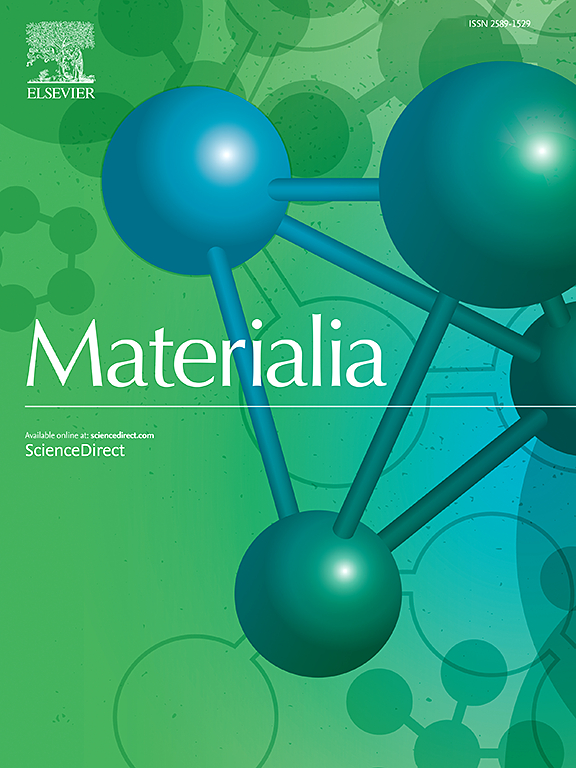Recrystallization driven softening and heating rate dependencies of FeCrAl nuclear fuel cladding during accident transients
IF 3
Q2 MATERIALS SCIENCE, MULTIDISCIPLINARY
引用次数: 0
Abstract
A refined understanding of FeCrAl cladding behavior during rapid transients is critical for its potential deployment in light-water reactors. Current assessments focus on transient burst testing metrics such as balloon geometry, burst temperature, and hoop stress, often used as proxies for simpler conventional tensile properties. However, directly correlating isothermal tensile and creep data with accident transient scenarios remains a challenge, although it is essential for high fidelity model development. Recent modeling based on tensile tests up to 800 °C, conducted with both immediate loading and a 10-minute soak, showed that immediate loading better predicts experimental burst temperatures, indicating a thermal softening effect. Building upon this observation, the current study connects transient performance, microstructural evolution, and high-temperature tensile properties by leveraging results from C26M claddings burst tests performed at heating rates of 1–50 °C/s and hoop stresses from 25 to 100 MPa. At 25 MPa, rupture temperatures varied by only 6 °C, but at 100 MPa, the difference reached 116 °C, with faster heating yielding higher burst temperatures. Microstructural analysis identified recrystallization as the primary cause of heating rate-dependent softening, eliminating prior cold-working. In-situ thermomechanical data linked ballooning onset to localized instabilities, similar to ultimate tensile strength behavior in conventional tensile tests. High heating rates correlated with immediate loading tensile data, while lower rates matched soaked data. By linking burst performance to microstructural evolution and tensile properties, this work provides a foundation for more accurate modeling of FeCrAl claddings and potentially other Fe-based materials under accident conditions.

事故瞬态中feral核燃料包壳的再结晶驱动软化和升温速率依赖关系
对快速瞬变过程中铁铁包层行为的精确理解对于其在轻水反应堆中的潜在部署至关重要。目前的评估侧重于瞬态爆破测试指标,如气球几何形状、爆破温度和环向应力,这些指标通常被用作简单的常规拉伸性能的替代指标。然而,直接将等温拉伸和蠕变数据与事故瞬态情景相关联仍然是一个挑战,尽管这对高保真度模型的开发至关重要。最近基于高达800°C的拉伸测试建模,进行了即时加载和10分钟浸泡,表明即时加载可以更好地预测实验破裂温度,表明热软化效应。在此基础上,本研究利用C26M包层在加热速率为1-50°C/s、环向应力为25至100 MPa的条件下进行的爆炸试验结果,将瞬态性能、微观结构演变和高温拉伸性能联系起来。在25 MPa下,破裂温度仅变化6°C,但在100 MPa下,差异达到116°C,加热速度越快,破裂温度越高。显微组织分析确定再结晶是加热速率相关软化的主要原因,消除了先前的冷加工。现场的热力学数据将膨胀的发生与局部不稳定性联系起来,类似于传统拉伸试验中的极限拉伸强度行为。高升温速率与即时加载拉伸数据相关,而低升温速率与浸泡数据相匹配。通过将爆炸性能与微观结构演变和拉伸性能联系起来,这项工作为在事故条件下更准确地建模FeCrAl包层和潜在的其他铁基材料提供了基础。
本文章由计算机程序翻译,如有差异,请以英文原文为准。
求助全文
约1分钟内获得全文
求助全文
来源期刊

Materialia
MATERIALS SCIENCE, MULTIDISCIPLINARY-
CiteScore
6.40
自引率
2.90%
发文量
345
审稿时长
36 days
期刊介绍:
Materialia is a multidisciplinary journal of materials science and engineering that publishes original peer-reviewed research articles. Articles in Materialia advance the understanding of the relationship between processing, structure, property, and function of materials.
Materialia publishes full-length research articles, review articles, and letters (short communications). In addition to receiving direct submissions, Materialia also accepts transfers from Acta Materialia, Inc. partner journals. Materialia offers authors the choice to publish on an open access model (with author fee), or on a subscription model (with no author fee).
 求助内容:
求助内容: 应助结果提醒方式:
应助结果提醒方式:


